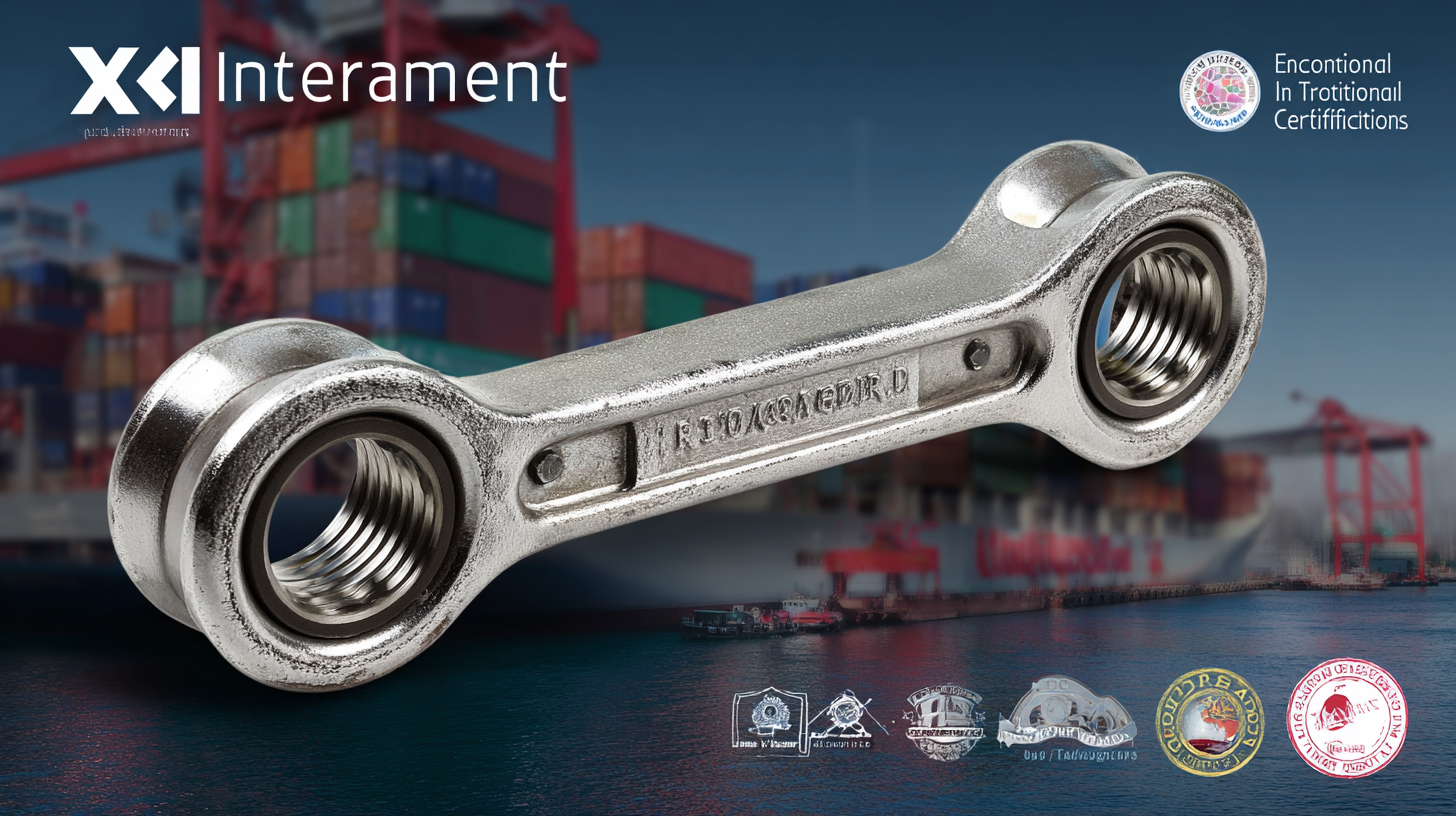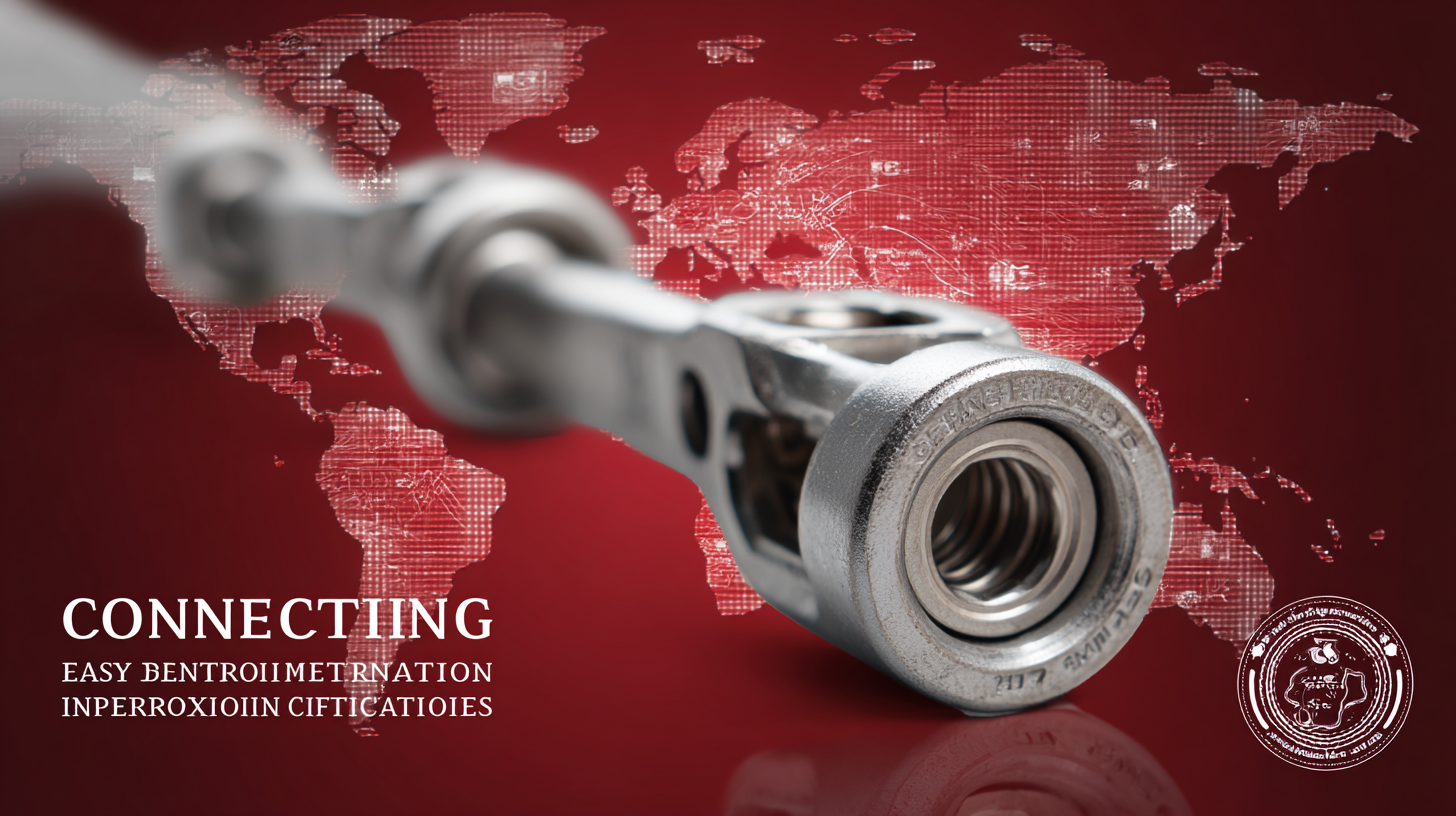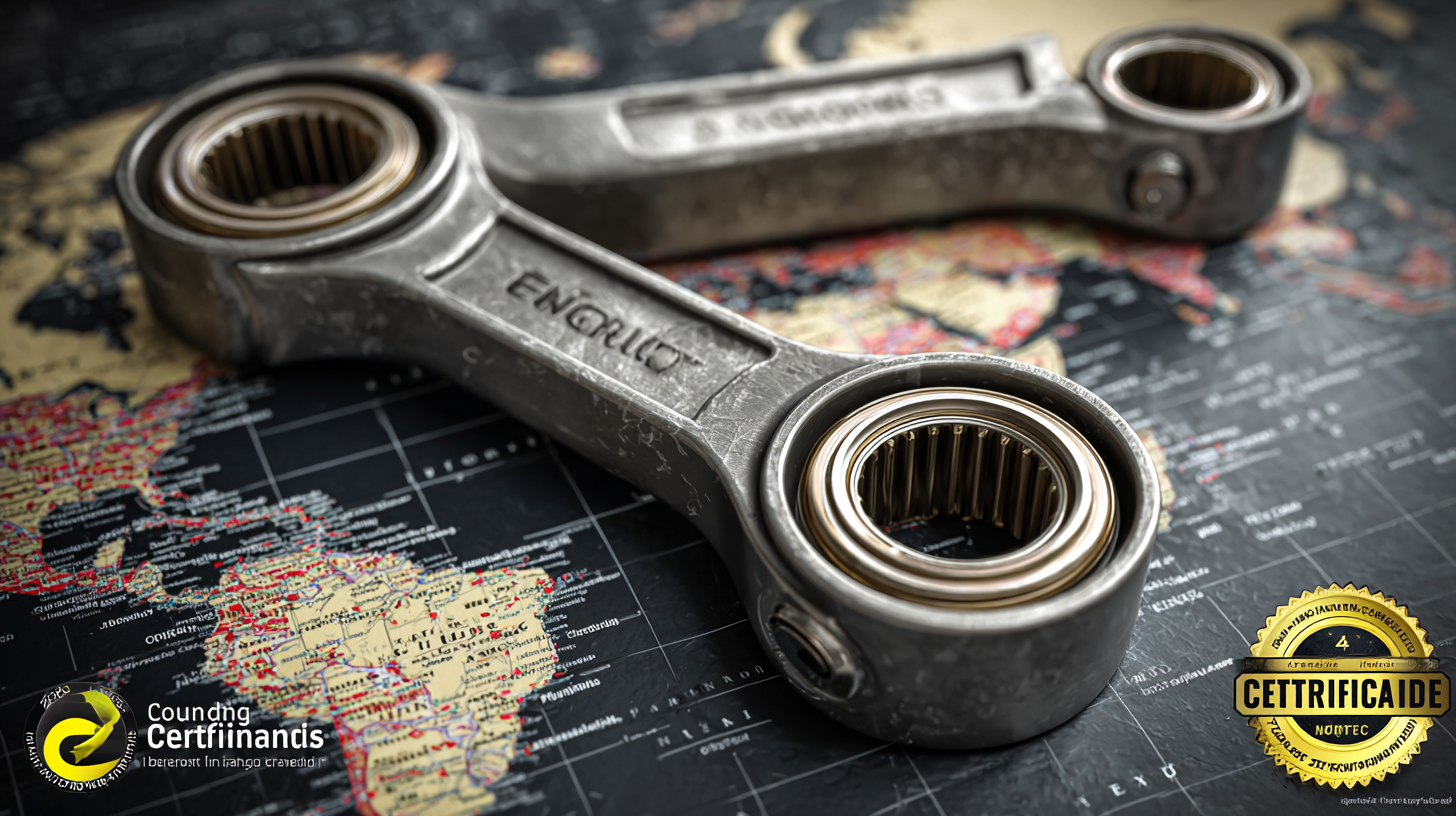 +86 13794985240
+86 13794985240
Leave Your Message
-
 CONTACT NUMBER
CONTACT NUMBER -
 CONTACT NUMBER
CONTACT NUMBER -
 CONTACT NUMBER
CONTACT NUMBER



In the dynamic landscape of international trade, the importance of connecting rods in automotive and machinery applications cannot be overstated. According to a recent report by the International Organization of Motor Vehicle Manufacturers, the global demand for connecting rods is projected to reach over 2 billion units by 2025, fueled by the rise in automotive production and advancements in technology. As countries strive to enhance their trade relations, the significance of proper import and export certifications for connecting rods becomes paramount. These certifications not only ensure compliance with international standards but also act as a catalyst for quality assurance and market access. By focusing on detailed technical parameters and adhering to best practices in certification processes, businesses can optimize their supply chains and gain a competitive edge in the booming global market.

Import and export certifications play a crucial role in the international trade of connecting rods, a vital component in various mechanical and automotive applications. According to a report by the International Trade Centre (ITC), the global market for automotive parts, including connecting rods, is projected to reach over $1 trillion by 2025. To effectively penetrate this burgeoning market, manufacturers must comply with specific certification requirements that guarantee product quality and safety standards. Certification not only facilitates smoother border crossings but also enhances credibility among international buyers.
Understanding the intricacies of these certifications is essential for companies looking to optimize their trade capabilities. There are several key certifications, such as ISO 9001, which emphasizes quality management systems, and CE marking for compliance with European health, safety, and environmental protection standards. Reports indicate that companies that have adopted such certifications have seen a 20% increase in export opportunities within three years. As the demand for high-quality connecting rods grows, businesses must prioritize obtaining the necessary certifications to maintain competitiveness and foster trust with partners around the globe.
Securing certifications for international trade, particularly in niche markets like connecting rods, provides numerous strategic advantages that can significantly enhance business operations. One of the key benefits is the establishment of trust and credibility with partners and customers across borders. Certifications demonstrate compliance with industry standards, thus assuring stakeholders of the quality and reliability of the products offered. This essential credibility can be a deciding factor in entering new markets, where buyers are often hesitant to engage with unverified suppliers.
Furthermore, certifications can streamline the import and export processes, reducing the time and costs associated with navigating regulatory frameworks. With the rapidly evolving landscape of global trade, having the right certifications can facilitate easier access to various markets while ensuring compliance with international trade laws. Additionally, as businesses strive for operational excellence, certifications such as Six Sigma provide frameworks for continuous improvement and efficiency.
Companies that embrace these certifications not only position themselves as leaders in their field but also contribute to a more stable global trade environment, which is critical for sustained economic growth.
Navigating the intricate landscape of tariffs and regulations for connecting rods is crucial for businesses engaged in international trade. According to the World Trade Organization, trade in auto components, including connecting rods, has seen significant growth, increasing by approximately 4.5% annually over the last five years. However, this growth is accompanied by a complex web of regulatory compliance and tariffs that can pose challenges for importers and exporters alike.
To effectively maneuver through these hurdles, companies should prioritize obtaining relevant import and export certifications. Engaging with certification bodies ensures compliance with international standards, which can ease the tariff burden. Additionally, being aware of the Harmonized System (HS) codes related to connecting rods can help businesses accurately classify their products, minimizing delays and unexpected costs at customs.
Tip: Always stay updated on changes in policies and tariffs by subscribing to industry newsletters or utilizing resources such as the International Trade Administration's website.
Trade agreements can also play a vital role in reducing tariffs. By identifying free trade agreements that include provisions for automotive parts, businesses can leverage lower duty rates.
Tip: To maximize benefits from trade agreements, consider conducting a thorough analysis of your supply chain to align with partners in regions that offer the best tariff incentives.

Building strong partnerships with certified suppliers and distributors is crucial for businesses involved in international trade, especially in sectors relying on high-quality components like connecting rods. Certifications serve as a trust signal, assuring businesses that their suppliers comply with industry standards and regulations. This not only enhances the reliability of the products sourced but also streamlines communication and logistics, reducing potential delays caused by compliance issues.
Engaging with certified suppliers opens up avenues for better negotiation and collaboration, fostering long-term relationships that benefit both parties. When companies prioritize certified distributors, they not only elevate their supply chain's integrity but also gain access to a network that is committed to excellence. Such partnerships can lead to innovation, co-development of products, and improved market reach, ultimately driving growth and profitability in the highly competitive global marketplace. By emphasizing certifications, businesses can enhance their operational efficiency and solidify their standing in international trade.
This chart illustrates the growth in international trade volume of connecting rods over the past five years, categorized by import and export certifications. The data reflects the trend of increasing partnerships with certified suppliers and distributors, essential for enhancing trade quality and reliability.
In the current landscape of global trade, leveraging market research is crucial for enhancing connecting rod exports and imports. With China's total import and export value reaching 28.58 trillion yuan in the first eight months of 2024, a 6% year-on-year increase, businesses can utilize this data to identify key markets and optimize their strategies. Understanding trends in demand, competitive pricing, and consumer preferences enables manufacturers to refine their product offerings and enhance their market presence.
**Tip:** Conduct thorough market research to identify emerging trends and potential growth areas. Investing in updated data analytics tools can significantly improve your insights and decision-making processes.
Furthermore, as governments promote high-quality foreign trade development, businesses must adapt by obtaining necessary import and export certifications. These certifications not only facilitate smoother trade operations but also enhance product credibility in international markets.
**Tip:** Stay informed about the certification requirements in target markets to ensure compliance and leverage this for competitive advantage. Regular updates and training for your team on regulatory changes can prevent potential delays and enhance your export capabilities.

